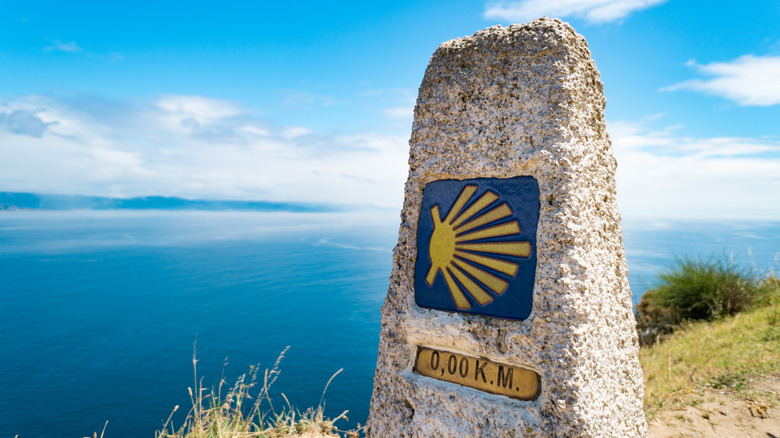Discover Panoramic Views And Unforgettable Sunsets At A Little Town On Spain's Rugged Coast
Nestled along the rugged coastline of Spain's Costa da Morte in Galicia, the picturesque town of Fisterra beckons travelers with its breathtaking views and rich history. Known as Finisterre in Galician, this charming coastal gem is one of the most western points of Spain's mainland and was thought to be the end of the world by the ancient Romans. Today, Fisterra continues to captivate visitors with its dramatic cliffs, pristine beaches, and legendary sunsets that paint the sky in a mesmerizing array of colors.
For centuries, Fisterra has held a special place in the hearts of travelers and spiritual seekers. As the final destination for many pilgrims walking the Camino de Santiago, a historic hike that's Europe's equivalent to the Appalachian Trail, this small town offers a sense of accomplishment and wonder to those who reach its shores. The sight of weary travelers dipping their feet in the Atlantic Ocean has become a common and poignant scene, symbolizing the end of their long journey at the end of the world.
Beyond its historical and spiritual significance, Fisterra has emerged as a popular destination for those seeking a blend of natural beauty, cultural richness, and tranquility. With its laid-back atmosphere, fresh seafood cuisine, and stunning coastal landscapes, this Galician town offers a unique and unforgettable experience for visitors from all over the world.
The journey to Fisterra
Fisterra is perched on the Costa da Morte, or the "Coast of Death," jutting out into the Atlantic Ocean and creating a dramatic backdrop for exploration and contemplation. The town's location at the western end of the Iberian Peninsula has long captured the imagination of travelers and adventurers. In ancient times, this point was believed to be where the world ended and the mysterious realm of the afterlife began.
Fisterra's connection to the Camino de Santiago pilgrimage adds another layer of allure to its already captivating atmosphere. Many hikers choose to extend their journey beyond Santiago de Compostela to reach this coastal town, walking an additional 55 miles to stand at the edge of the continent. The sight of pilgrims arriving at the iconic zero-mile marker with the vast ocean stretching out before them is a powerful reminder of human resilience and the transformative power of travel.
At the heart of Fisterra's appeal lies the Cape Finisterre lighthouse, a beacon that has guided sailors and hikers for generations. Sitting atop a cliff 780 feet above sea level, this lighthouse offers panoramic views of the coastline and the endless expanse of the Atlantic. As the sun dips below the horizon, casting its golden light across the water, visitors gather to witness one of the most spectacular sunsets in Europe, offering a truly unforgettable experience that encapsulates the magic of this special place.
Natural beauty and coastal charm in Fisterra
The rugged beauty of Fisterra's coastline is a testament to the raw power of nature. Jagged cliffs plunge dramatically into the churning Atlantic, while hidden coves and pristine beaches offer retreats for those willing to explore. The beach of Langosteira has a long stretch of white sand, providing an ideal spot for sunbathing and swimming during the warmer months. Meanwhile, smaller, more secluded beaches like O Rostro and Mar de Fora offer a sense of isolation and connection with nature.
Fisterra and its surrounding areas offer a wealth of activities. Hiking trails wind along the coast, providing breathtaking views and opportunities to spot local wildlife. The O Camiño dos Faros is a particularly popular route that connects Fisterra to other coastal towns, passing the best of Galicia's stunning scenery and lighthouses. As the day draws to a close, visitors and locals alike gather at vantage points around the cape to witness the daily spectacle of the setting sun. About 80 miles away, you'll find the Illa de Arousa, one of the most beautiful islands in Spain you probably haven't heard of.
No visit to Fisterra would be complete without savoring the local cuisine, which celebrates the bounty of the sea and the rich culinary traditions of Galicia. Fresh seafood takes center stage, with dishes like centollos (crab) and percebes (goose barnacles) delighting food lovers. Local restaurants and tapas bars serve these delicacies alongside regional wines, providing a true taste of the Costa da Morte's gastronomic heritage. For another wildly underrated foodie region in Spain with beautiful green rolling hills, visit Asturias.


